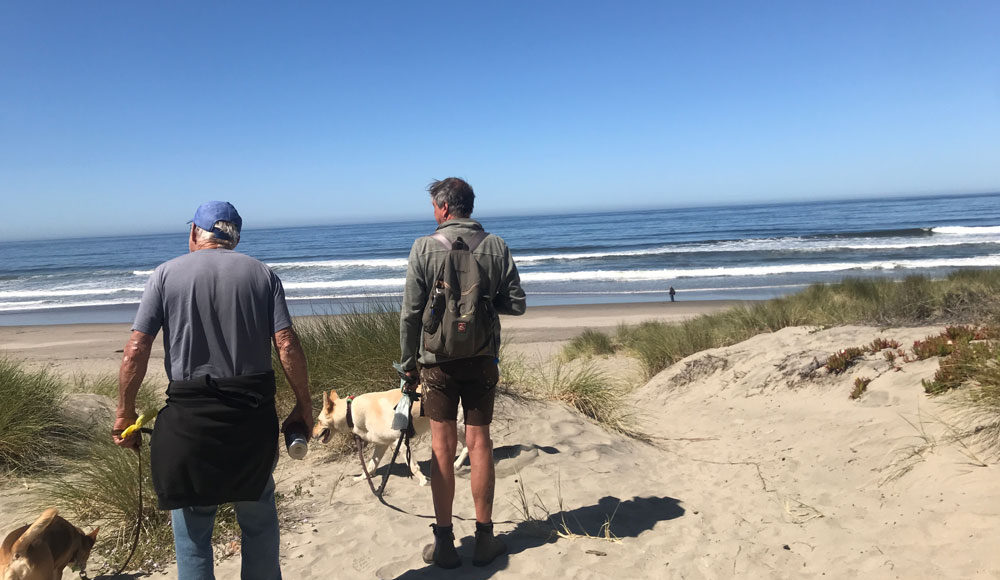We had heard about the brown pelicans getting sick, that they’re not getting enough to eat. Russ Curtis, a spokesperson for International Bird Rescue, told KQED, “One pelican in Santa Cruz attempted to walk into a bar.”
A pelican walks into Brady’s Yacht Club and orders a shot of whiskey.
The bartender says, “I don’t see how you’re going to drink from a shot glass, much less pay for it.”
“Put it on my bill.”
Sleepy John Sandidge, Laurence Bedford and I rendezvous at the end of Beach Road, where it dead ends at the Pajaro Dunes. Sleepy John looks worried: “Did you bring weed?”
Laurence rummages through the cab of Sleepy’s truck and I search my Prius, and lo and behold, I be holding! A marginally famous local businesswoman had given me a baggie of Blue Dream, with crazy high sativa content, perfect for hiking. I pull it out from under the passenger seat, and hold it aloft as the boys whoop and holler.
Pajaro Dunes beach gives long, sensational, unobstructed views north and south. The ocean rolls in gentle waves that Sleepy John says would be good for boogie boarding, or for a beginning surfer. We walk up to a dead pelican on the beach.
Laurence says, “If we built a fire, we could cremate him.”
Sleepy John says, “My uncle was cremated. At least we think that’s what killed him.”
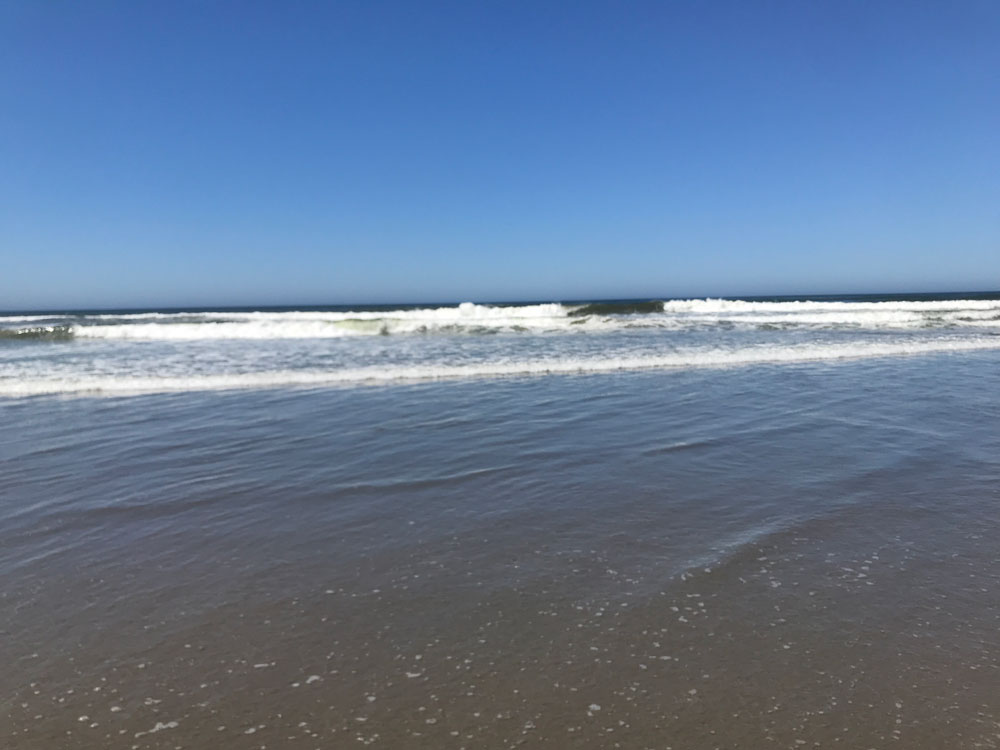
We walk south, toward the smokestacks of Moss Landing. Sleepy John asks me how my search for a place in Santa Cruz is going.
“I don’t make enough money to apply for affordable housing.”
We come upon a sand excavation next to the cliff rocks. Someone had dug a circular living room out of the firm sand, replete with chairs, tables for beverages and a fireplace in the middle. I’ve never sat in a more comfortable living room in my life.
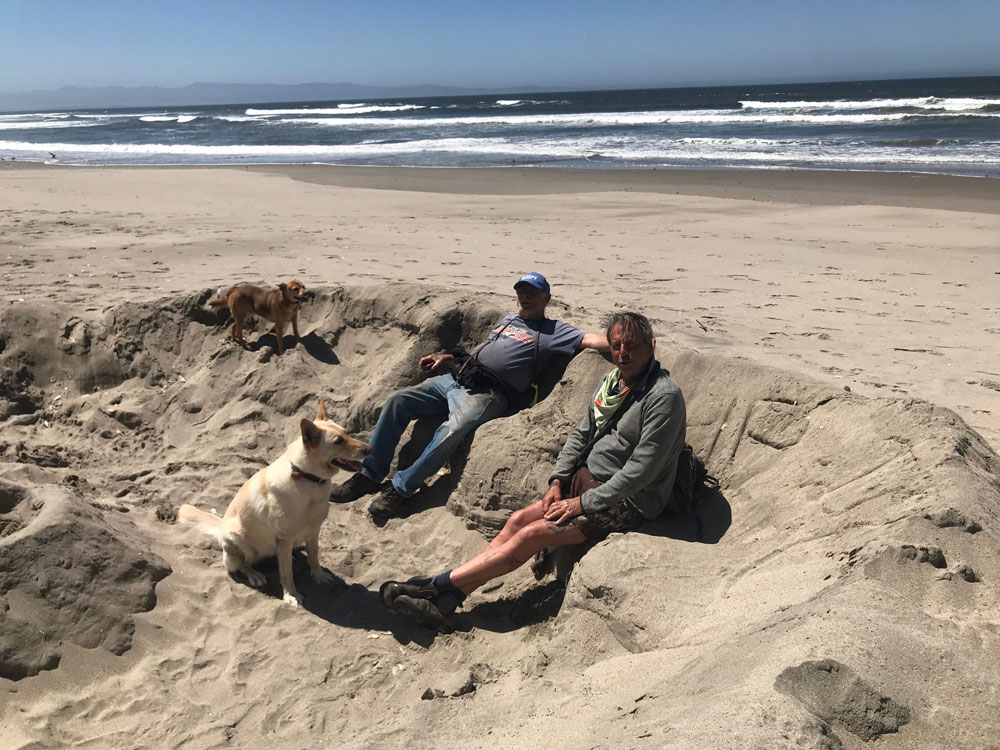
We sit in our sand living room for an hour, photographing the flocks of pelicans flying north, flying over us on their northern migration. We shoot video of them in slow motion. They just keep coming. Two, three, then maybe 20 at a time, in perfect V formation. They fly low, just inches over the tops of rocks.
Pelicans live up to 30 years, sometimes to 40. Sleepy John turns 85 on Nov. 1; that’s about 30 in pelican years. Pelicans are tough old birds, much like my friends. Laurence and Sleepy John talk about their annual winter trips to Mexico. That is where the pelicans are returning from.
We load the kombucha can pipe with the Blue Dream and pass it to the left as we watch the stream of migrating pelicans fly over our heads. Laurence Googles pelicans on his phone and reads to us.
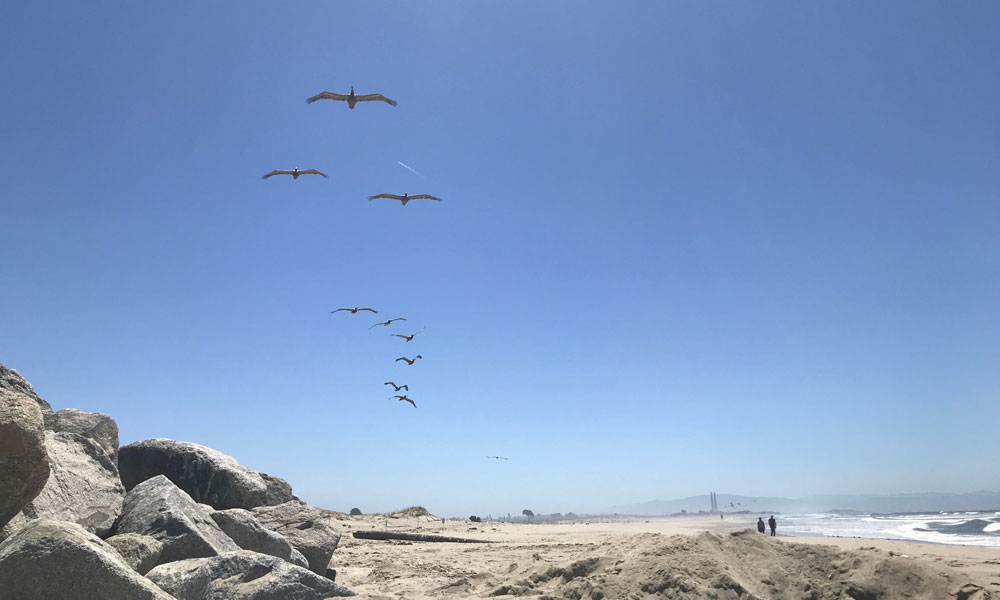
“In the winter they migrate in groups, fleeing cold winters to congregate at the edge of the ocean from California south to Nicaragua, where they breed. In the spring they migrate north, as far as British Columbia. Pelicans are seasonally monogamous, meaning that every breeding season they pair up with a mate and then stay with that mate for the rest of the season.”
“So, a pelican who lives to 30 has probably had at least 25 one-season relationships.”
Sleepy John says, “Serial monogamy. I used to have friends like that but those are the ones who died. Pelicans have 25 exes? No wonder they’re expiring.”
I say, “I’ve been married for 32 years.”
Laurence looks at me and frowns.
“Well, not in a row.”
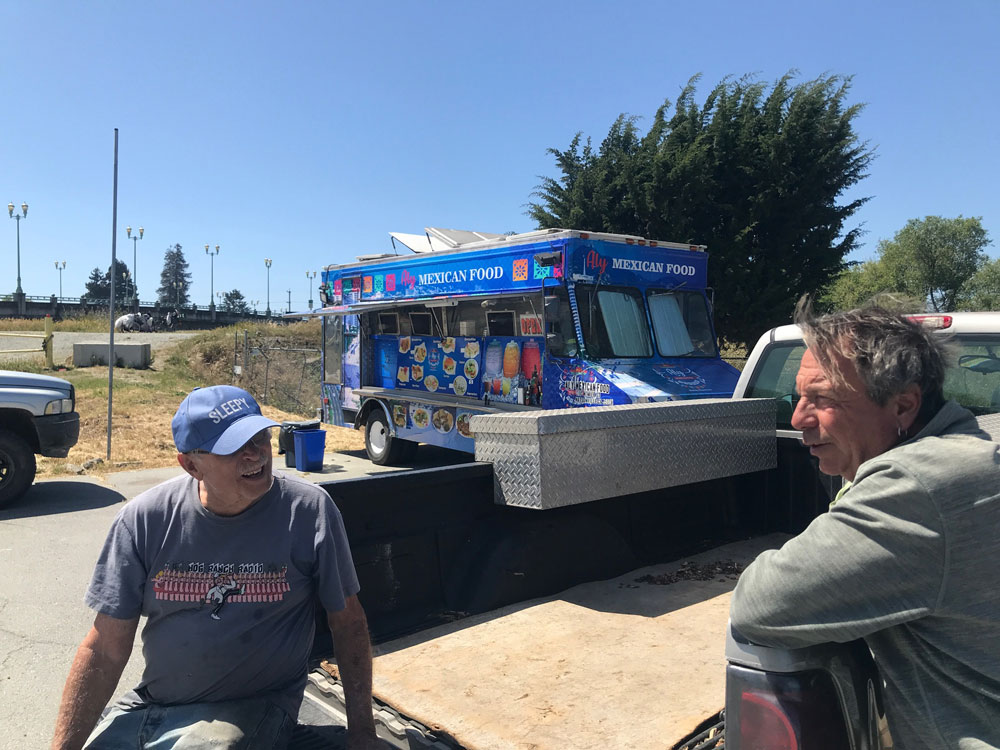
The three-mile walk and the Blue Dream smoke makes us jones for authentic Mexican and a Watsonville food truck is about as real as a taco gets.
Pajaro Dunes Beach is a magnificent beach walk. Or maybe we just had a magnificent day. It is easy to get to, a stunning beach whether you turn north or south, and this time of year you will have hundreds of pelicans swoop down and sail just over your head.
How to get there: Take Highway 1 to Watsonville. Exit Beach Road, follow Beach Road west, all the way to the trailhead on Parajo Dunes Beach.


